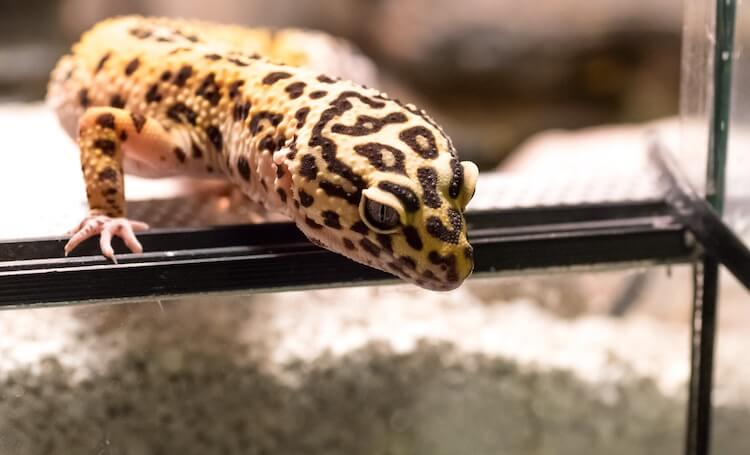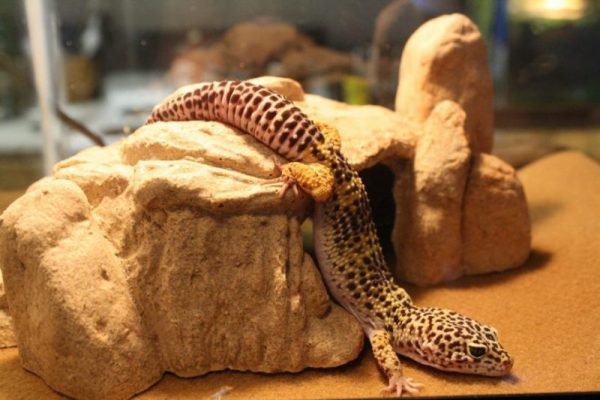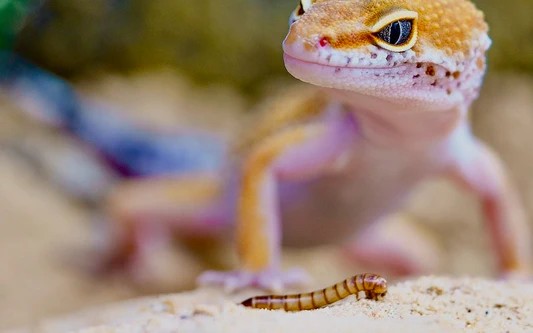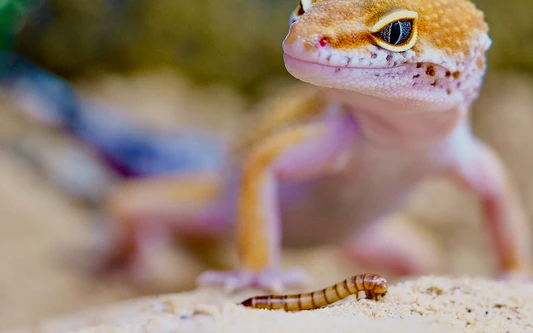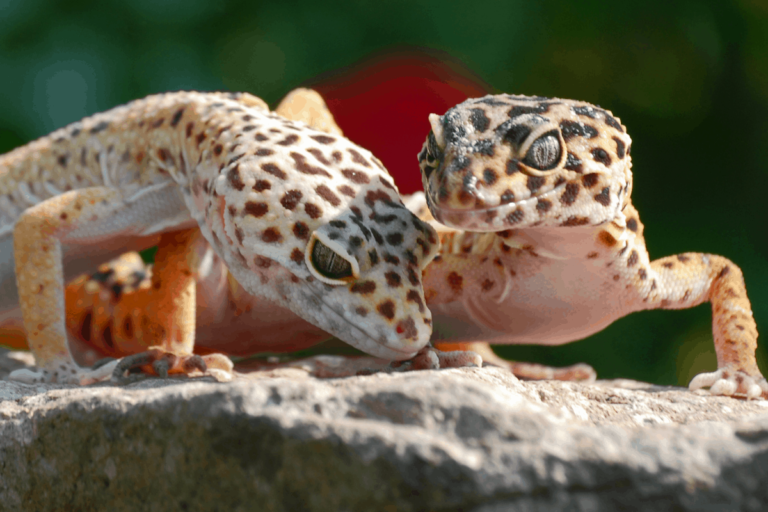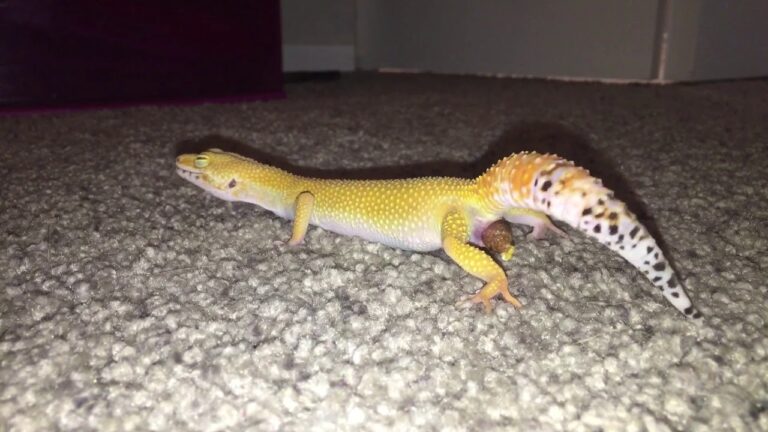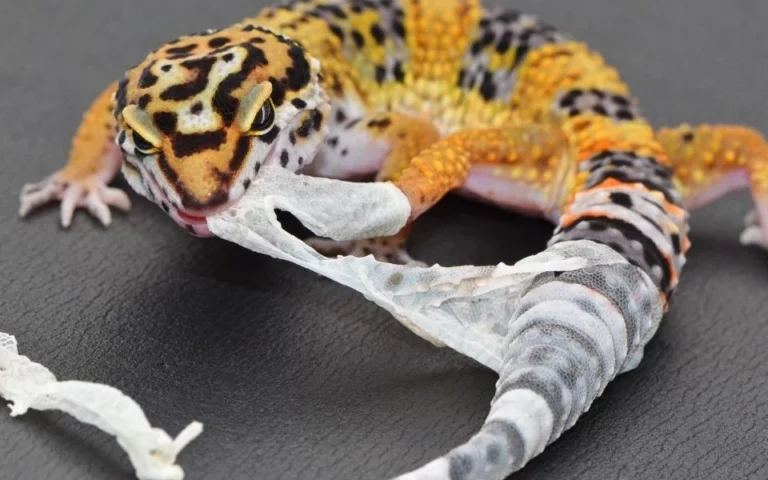Do Leopard Geckos Need A Heat Lamp: A Guide To Optimal Care
As I gazed into the cozy enclosure of my beloved leopard gecko, Gizmo, I couldn’t help but marvel at the intricate world of reptile care. With their distinctive spots and charming personalities, leopard geckos have become increasingly popular as exotic pets.
However, their well-being relies on a delicate balance of environmental factors, and one question that often arises in the minds of reptile enthusiasts is, “Do leopard geckos need a heat lamp?”
Well Yes, they do need warmth. While a heat lamp isn’t a must, it can be a great choice to keep your gecko comfortable, especially if you don’t use other heating methods. Some geckos actually prefer it overheating mats
So, let’s embark on this informative adventure to provide your leopard gecko with a warm and comfortable home they’ll thrive in.
Why Leopard Geckos Need a Heat Lamp:
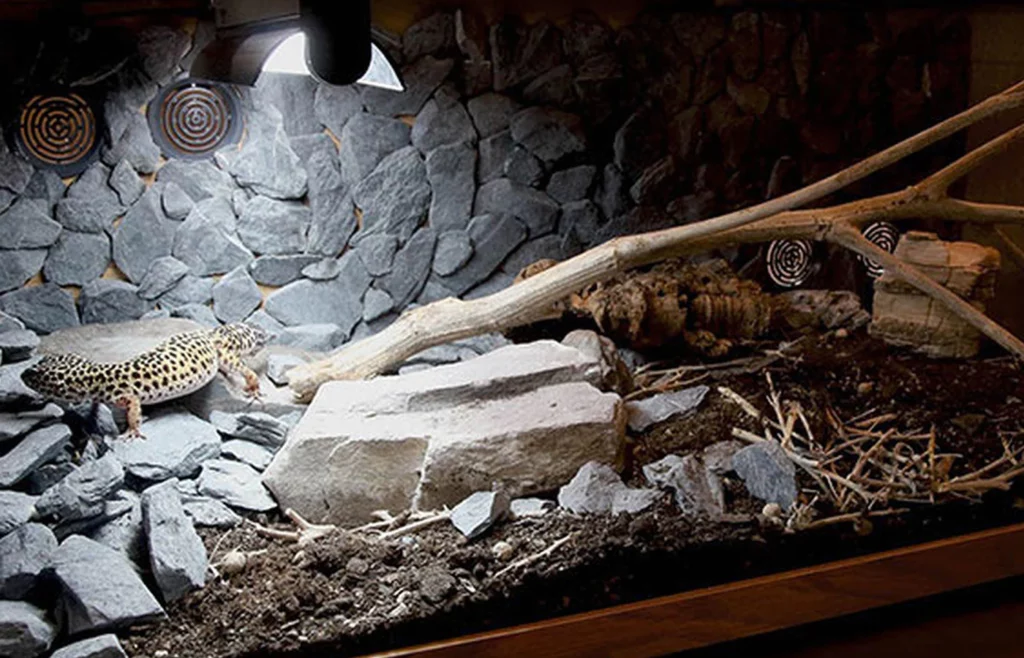
Temperature Regulation: These creatures, originating from arid regions of Asia, naturally bask in sunlight to adjust their body temperature. In captivity, replicating this behavior is crucial. A heat lamp provides a localized heat source, allowing them to control their temperature by moving closer to or away from it.
Digestion: As strict insectivores, their ability to digest food depends on temperature. A warm environment is necessary for efficient digestion. Inadequate body temperature can lead to digestion issues and health problems.
Metabolism: Maintaining the right temperature range supports their metabolism, ensuring that bodily functions like digestion, growth, and overall health work optimally.
Activity Levels: A proper temperature gradient, achieved with a heat lamp, encourages activity. They will move between warmer and cooler areas within their habitat, promoting natural behaviors and exercise.
Health and Immunity: Maintaining the correct temperature range is crucial for their health and immune system. Cold temperatures can weaken their immune response, increasing susceptibility to diseases.
To provide the ideal temperature gradient for leopard geckos, you’ll need a heat lamp on one side of their enclosure. This creates a warm basking spot (around 88-92°F or 31-33°C) and a cooler area (around 75-80°F or 24-27°C) on the opposite side. Also, using a thermostat or temperature controller with the heat source ensures that the temperature remains within the appropriate range.
How Long Can a Leopard Gecko Live Without a Heat Lamp?
A leopard gecko’s survival is incredibly sensitive to temperature fluctuations, and if the temperature falls below 15.5°C (60°F), its life can be in jeopardy within just a matter of days.
Furthermore, even in conditions where the temperature remains above this critical threshold, the absence of a heat lamp and/or heating mat to simulate the natural temperature variations between night and day significantly reduces its lifespan. This decline in lifespan can accelerate if additional stressors come into play, including
- An improper or poor diet can further compromise the gecko’s health and longevity.
- Pre-existing health issues can exacerbate the detrimental effects of temperature fluctuations.
- If the gecko must compete with another for food and territory, this added stress can hasten its decline.
- Without alternative heat sources to compensate for the absence of a heat lamp or mat, the lifespan is further diminished.
- Older individuals may be more vulnerable to the adverse effects of inadequate temperature regulation.
What Happens to a Leopard Gecko Without a Heat Lamp?
Failing to maintain the correct temperature cycle for your pet, particularly without a reliable heat source, can quickly lead to illnesses like digestion problems, and MDC. Even a minor deviation of just a degree or two or the improper setup or malfunctioning of heating equipment can spell trouble.
It is of utmost importance to meticulously adhere to the manufacturer’s instructions for your heating equipment and conduct regular checks to ensure it’s functioning optimally. If there’s an issue with the heating in your leopard gecko’s enclosure, your gecko will not hesitate to communicate it.
Indications of inadequate heating in these creatures encompass:
Lethargy: A noticeable lack of energy and activity in your gecko may signal temperature-related distress.
Eye Troubles: Difficulty in opening their eyes can manifest when the temperature isn’t in the right range.
Altered Feeding and Drinking Habits: Inadequate heating can disrupt their appetite and drinking routines.
Behavioral Shifts: Watch for behavioral changes, such as increased hiding or altered activity patterns, which can be indicative of temperature-related discomfort.
How to Create a Day & Night Cycle with a Heat Lamp in a Leopard Gecko Tank?
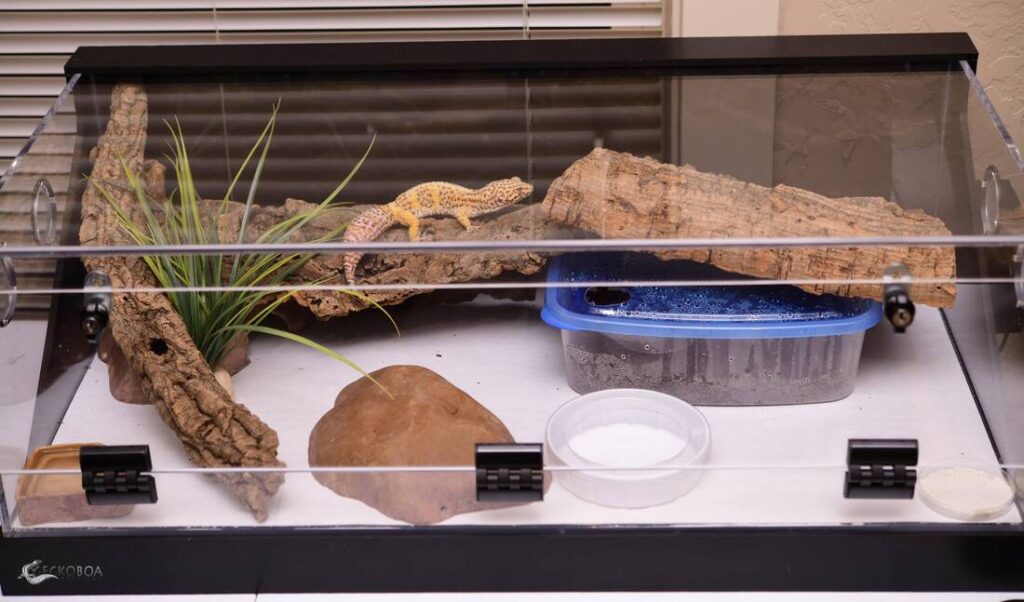
Leopard geckos have specific day and night behaviors. They’re not nocturnal but crepuscular, meaning they’re most active during twilight.
To ensure they experience a proper day and night cycle, which affects their activity and energy conservation, use a heat lamp with a timer. This mimics natural sunlight patterns.
Consider adding a 2% to 7% UVB light about 9 to 12 inches above their basking spot. It helps with Vitamin D3 regulation, which is crucial for their health.
Here’s a tip: Position the UVB light toward the back of the tank ceiling, near the warm area. This creates a gradient, letting your gecko control its UVB exposure.
As the seasons change, the balance between daylight and nighttime hours shifts. This impacts the amount of light and temperature changes your gecko experiences.
In summer, there are 12 hours of daylight and 12 hours of nighttime. In winter, there are 10 hours of daylight and 14 hours of nighttime.
For a smooth transition in spring, gradually increase the daylight hours from 10 to 12 over six weeks by adding 20 minutes of light each week. In the fall, do the reverse by adding 20 minutes of light each week for six weeks as you move into winter.
How to Set Up a Heat Lamp for a Leopard Gecko?
- Pick a “daytime bulb” that provides both heat and light. Ensure it’s durable to avoid frequent replacements. A 50 to 75-watt bulb is often suitable for a 20-gallon tank.
- Match the bulb with a suitable fixture designed for your heat lamp.
- Position the heat lamp on the tank’s mesh lid, not in the middle, to create a temperature gradient.
- If using a heat mat along with the lamp, install a thermostat to control the mat’s temperature.
- Use a timer to establish a consistent day and night cycle.
- Ensure your leopard gecko can’t reach the hot lamp to prevent burns or damage to nearby materials.
Ditching the Heat Lamp: Alternatives for Keeping Your Gecko Warm
When it comes to ensuring your gecko’s comfort, there’s more than one way to achieve the right temperature without relying on a heat lamp. Here are some savvy alternatives:
Heat Pads: These discreetly nestle under the tank’s hot end, mimicking a natural environment while providing warmth. They’re a popular choice for gecko owners seeking temperature consistency.
Ceramic Heat Emitters: These robust options fit into standard ceramic sockets, just like regular incandescent bulbs. The difference? They emit heat without visible light, making them durable additions to your gecko’s basking spot.
UVB Bulbs and Lights: While they don’t generate much heat, UVB bulbs and fluorescent lights offer a different benefit – aiding in vitamin D processing for certain gecko species. However, avoid exposing your gecko to direct natural sunlight; it’s not recommended.
Crested Gecko Consideration: Crested geckos are a bit less demanding when it comes to supplemental heat. They thrive in stable temperatures that never drop below 65 degrees Fahrenheit.
FAQs
Can a Leopard Gecko Survive Without a Heat Lamp?
No, Leopard geckos require a heat source to maintain their body temperature and overall health. While they can survive for a short period without one, prolonged absence of a heat lamp can lead to health issues and reduced lifespan.
What Heat Light Do Leopard Geckos Need?
Leopard geckos need a low-wattage, nocturnal heat source such as a ceramic heat emitter or an under-tank heating pad. These provide the necessary warmth without disturbing their day-night cycle.
Can I Turn My Gecko’s Heat Lamp Off at Night?
Yes, Leopard geckos are crepuscular, meaning they are most active during dawn and dusk. It’s generally not recommended to turn off their heat source at night, as they still need stable warmth during their active periods.
What Happens if a Gecko Doesn’t Have Heat?
Without a proper heat source, a leopard gecko’s metabolic functions slow down, impacting digestion, immune system function, and overall well-being. Prolonged exposure to cold temperatures can lead to health problems and even death.
Final Words:
In conclusion, I’ve come to understand that a heat lamp is a crucial component of my leopard gecko’s care. It’s not just a convenience but a necessity for their well-being in captivity. As a reptile, I rely on external heat sources to regulate my body temperature, and this, in turn, affects various aspects of my life, including digestion, metabolism, and activity levels.
Moreover, Having it is like bringing a piece of my natural habitat into my enclosure. It helps me replicate the day and night cycle I’m accustomed to, allowing me to thrive and exhibit my natural behaviors.
Also, It’s essential to select the right equipment, ensure my safety, and maintain a proper temperature gradient within my habitat to ensure my comfort and health. Overall, a heat lamp is more than just a source of warmth; it’s a key element in providing me with a happy and healthy life in captivity.

